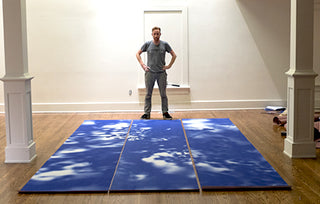Have you ever reached a moment where you realize you’ve known a person for longer than you haven’t? At 34, I passed this a few years back with my friend Eric William Carroll. After meeting in Mr. Setterholm’s 8th grade geography class, we quickly figured out that we were both insane, into art, and – most importantly at the time – both skateboarders. In a school nestled away in the northern suburbs of Minneapolis where diversity was a dirty word and the number of skateboarders in the school district could be counted with 2 hands (with digits to spare), meeting someone you could be a psycho with was pretty huge. From hosting the school’s daily morning show, learning the basics of photography from a narcoleptic teacher (who was also in a wheelchair and would fall asleep in the darkroom trapping you between sinks and enlargers), filming skateboard videos that ended up being college admission submissions, and later on traveling the country to meet each other at skate spots we’d seen in videos… Eric and I always clicked. Like most of us, you don’t find that many humans that impact you and stick with ya as you age, grow, and progress.
Recently Eric asked if I could assist in making and installing a show at Antioch College in Yellow Springs, OH. It’s probably no surprise if you haven’t heard of the school as it’s tucked away in a hyper liberal/hippy enclave that besides being land-locked has the come-as-you-are vibes of many a Southern California beach town. It was an interesting experience to say the least – being there for a week. After the work was made and hung, I sat down with Eric to do some questioning about how skating has influenced his art, the sensitive materials he works with, and life in the Midwest.
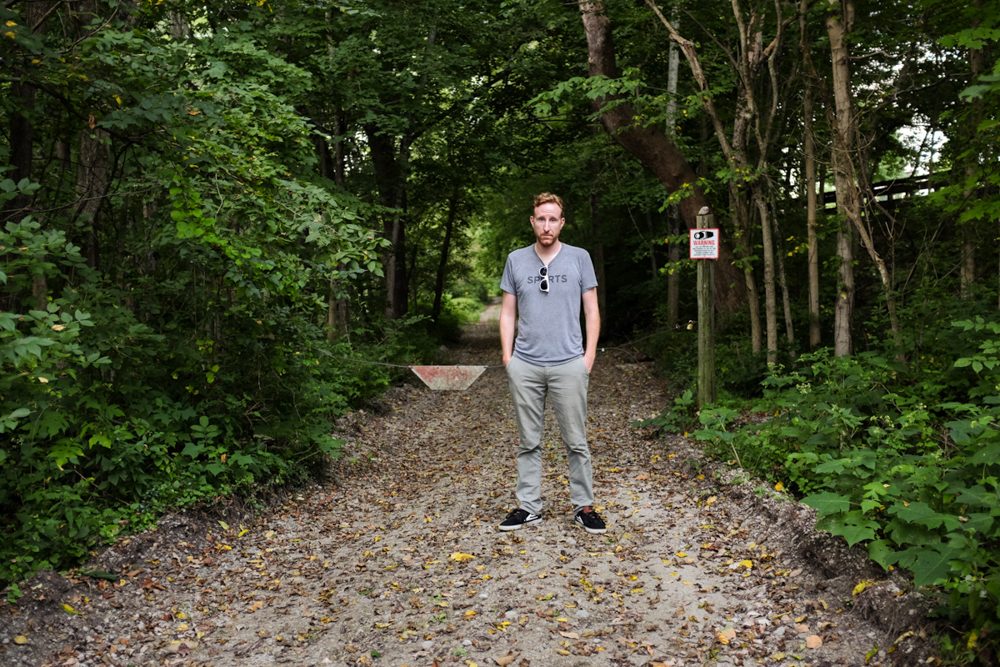
So you recently tricked me into coming out to Ohio to help you make and install some art. You wanna explain what it was that you were up to there?
One of the professors at Antioch college, Charles Fairbanks, a very talented film maker and artist, invited me out to produce work for a show he’s co-curating with another artist there. He had a couple works in mind that he wanted to include, one being the This Darkroom Has Gone to Heaven piece. The other idea was to make work on site. He was familiar with my project Blue Line of Woods. So, knowing the school was situated on the edge of a nature preserve, I thought it’d be a pretty ideal location to make site-specific work.
So, this show is essentially two projects?
Yeah. Exactly. But they’re both about the same idea. The name of the show is “Disappearing Acts.” It’s about this idea of photography trying to hold on to moments and make them permanent. One case you have a whole technology of photography that is obsolete and has disappeared: The dark room. And on the other case you have the blue pictures – it’s about one of the most ephemeral things you can imagine: The shadow.
I know you have done iterations of these before, but what was it about them that brought you back to them and how do you add new energy or relevance to them?
I believe in these two projects. They haven’t been shown much really. The dark room was shown in MPLS and SF. And now it’s in Ohio. So unless you went to those 2 shows, you really haven’t seen it. And the Blue Line of Woods, it’s had a couple shows, one in NY, 2 in SF and one that’s opening up now in MPLS (at the MIA). But still, you know, they’re big installations. So even if you see them on the web, it’s nothing compared to being in the room surrounded by these giant prints. So it’s kind of like why would a songwriter play the same song in multiple cities on tour? Well, it’s a good song and these people haven’t heard it yet live. So I’m going to tour the shit out of it till they ask me to stop.
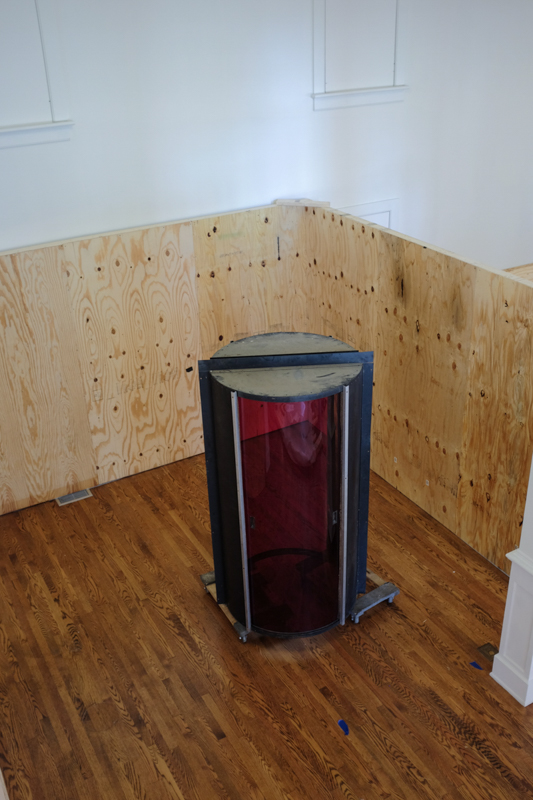
What were the dates on Blue Line of Woods and This Darkroom Has Gone To Heaven?
NYC in 2010 and MPLS now for Blue Line of Woods. And This Darkroom Has Gone To Heaven was 2006 in Minneapolis and 2012 in San Francisco.
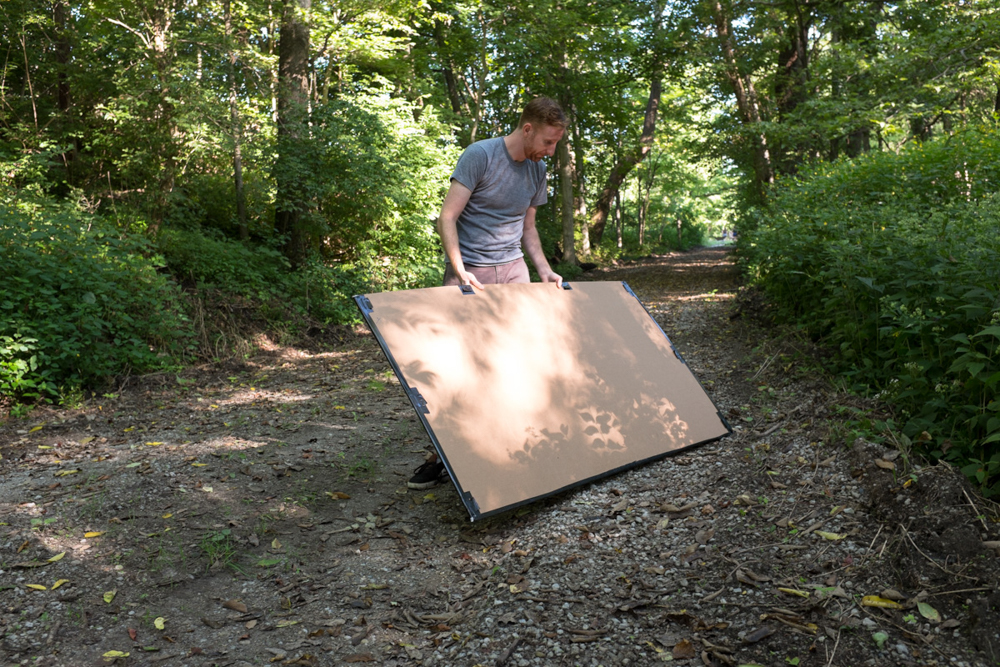
What are the other projects you are working on currently besides the one for the MIA?
I’ve been working on this new body of work that has been ongoing 5 years or so. It’s about science. Using art to try and convey these big ideas and sorta my feelings that things are connected. It’s a total mess and I’m still trying to figure it out. But I have a show up at the museum here. And hopefully we’ll work on a book and a talk that I’d like to tour. I’ll be doing the G.U.T. Feeling talk in Ohio in a month too.
I wanna talk about traveling and the Midwest; more or less moving away and coming home. You moved back from SF last year. What was it that you were up to out there?
Trying to figure out where I wanted to spend the rest of my life [laughs]. You and I went out there on a road trip in 2007 and it was my first experience with the city. And I really enjoyed it. I had moved to SF from NYC. I kinda did the same thing in New York, moved out there, worked with artists. Tried to figure out if it was a place I could live in the long run. I ended up getting burned out. SF seemed appealing, more chill and laid back vibe. But the tech scene kinda harshed that buzz, so to speak. It got more expensive than New York for us. My wife is from Charleston, South Carolina, and it was taking us like 6 hours to fly home to see her fam. And my family is in the Midwest. So, we were feeling the distance pretty strongly. It felt time to go back to the middle.
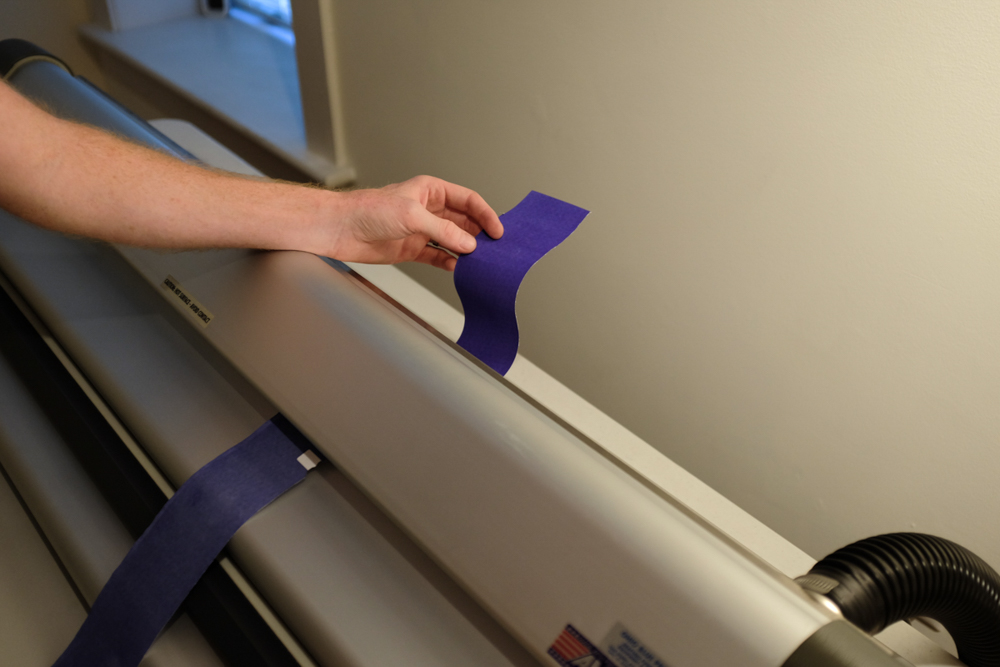
Sounds like you were working for other photographers and artists in SF and NYC?
Yeah, it started here in MPLS right out of grad school. And all those experiences in each city were ten times better than grad school. Not only do you learn applicable skills, but also how to run a business. And how other people run their businesses.
They don’t do that in art school.
Everyone is afraid to admit that we’re all making this shit up.
And the rent still needs to get paid no matter what the idea is. Regardless.
Exactly. And sometimes when someone asks what a price is sometimes we just pull a number out of the air. And see if they laugh at it or not. So that was a good real world how-to-be-an-artist lesson. It’s like an old school apprenticeship.
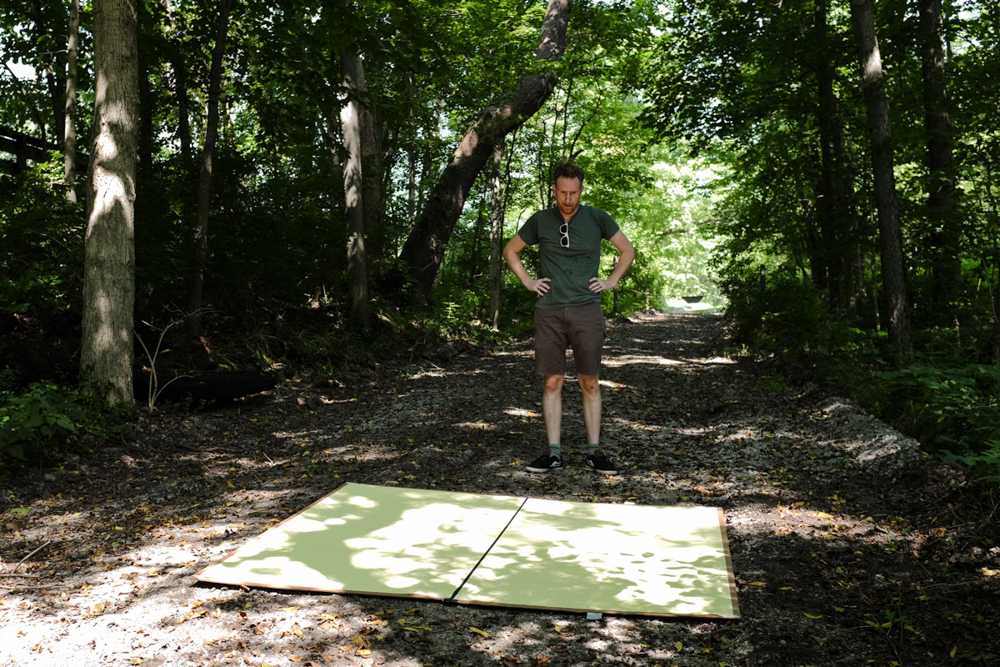
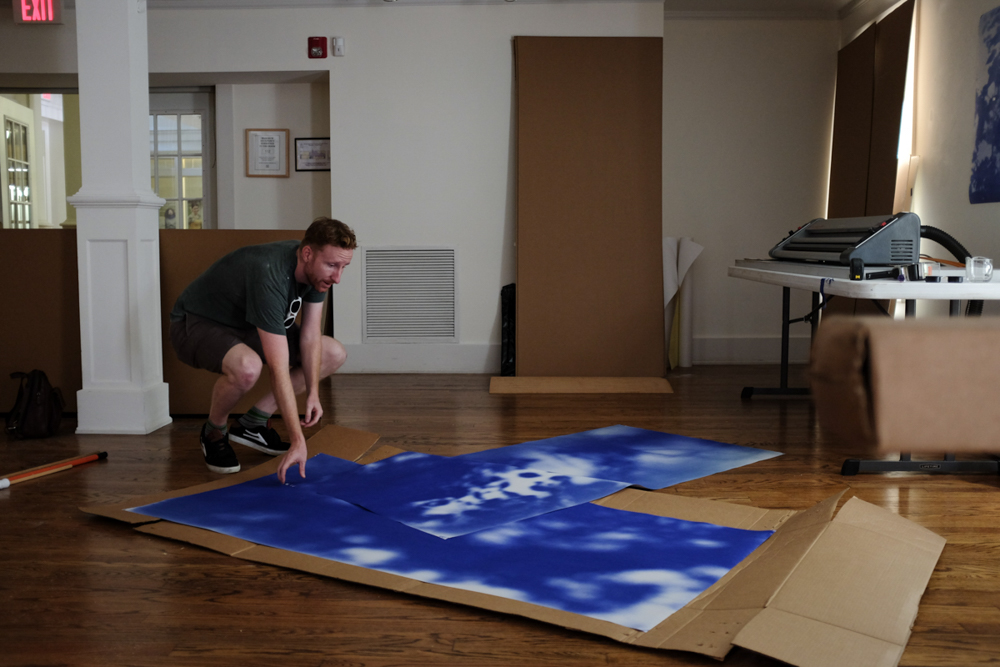
You wanna talk about process with regards to the Ohio show? It’s comprised mostly of diazotypes right? What exactly is a diazotype?
So that’s just a fancy word for blueprint. If you were an architect in the ’70s, ’80s, early ’90s or were really poor, you’d be using the diazotype process. It’s a cheap way of making copies of architectural drawings. It became obsolete because it got replaced by CAD and digital design, digital plotters. The machines are still around if you can find them and they still make the paper for it. It’s the cheapest light sensitive medium I’ve found.
I imagine it’s not the easiest thing to go to the store and buy a bunch of ammonia and blue print machines?
No, no one manufactures the machines anymore. They’re all used on eBay and craigslist. Some people try to sell ’em for thousands of dollars, like what they paid for them initially. Others are like, “Give me fifty bucks and get it out of here.” They’re heavy, big as a couch. The ammonia is still made, but not common. Freedom paper based in Texas still makes the paper. Maybe I’ll get a kickback from them for this plug [laughs].
Why do you approach making photographs with this outdated technology? Why that?
Before grad school I was making very sorta black and white 35mm diaristic snap shot kinda stuff. Kinda like what Ed Templeton does. Classic sort of photography and be a little experimental with it, like late Robert Frank style. Then I got into grad school and the first semester someone broke into my studio and stole all my cameras. I was at the beginning of my grad school career in photography and I had no cameras, no insurance. So I started to just use the paper. One of the first things I did was put glow-in-the-dark paper on my wheels of my skateboard and bottom. Rolled out a sheet of paper in the darkroom and after I charged the glow in the dark paper, I’d skate back and forth across the dark room. Playing with the idea of photography being a way to record the passage of time or events. With that in mind, I started looking for cheaper materials. I found the blueprint paper. The first darkroom piece was actually done with blueprints.
Does the fading, the aging, the deteriorating, is that something you embrace when it does happen?
Yes. Absolutely. Initially that was something that attracted me to that material. It seemed very much in line with the way I was thinking. This negotiation of trying to freeze something [in time].
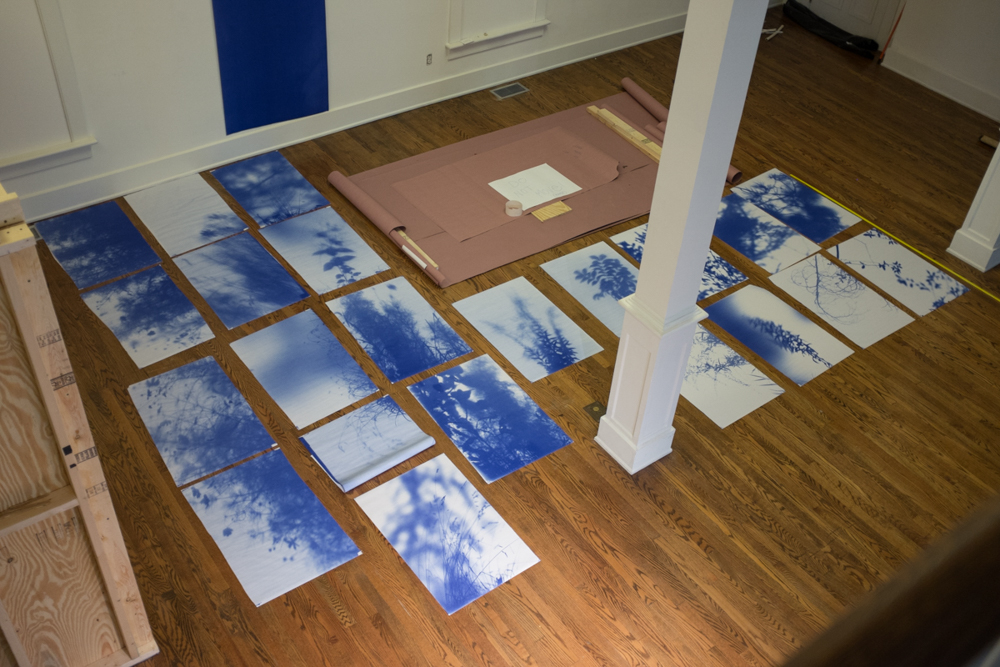
I think people have a weird fixation to make art last forever.
Yeah, photography especially. There’s a huge archival boner that is talked about by the galleries, the buyers, the collectors, and the artists themselves. They all get hung up on this thing of lasting forever. They need to make sure their photos last for four hundred years but an average home only lasts 60.
There are very few buildings that have ever lasted that long.
But architects aren’t chastised for it.
The Metrodome [where the Vikings played] lasted for what? 30 years? It was fine, still standing. And they’re replacing it why again?
My photographs last longer than the Metrodome.
I know that you and I have been skating together now for 20 years, and we skated before that on our own. What is that keeps you motivated to continue to punish yourself and those fragile little shins of yours after all these years? [Eric bruises like a banana]
Like we were talking earlier, probably it’s the most enjoyable and effective form of meditation for me. Where I can just do it and everything else I’m worried about fades away. The other thing I do, to get that same feeling, would be to take a walk in the woods.
This has a much more physical aspect to it. That is, if you’re still trying and all.
Which is, well… [trails off laughing].
Who’s your favorite skateboarder?
Ed Templeton. He’s just so fucking weird. I’ve admired him since we met. And he’s been someone that, you know usually as you age, you know you have different favorite bands? But he’s one of those guys that’s always been. He’s like the favorite all-time band. I loved Marc Johnson, Mike Carroll... all those guys too. But Ed, I keep coming back to him.
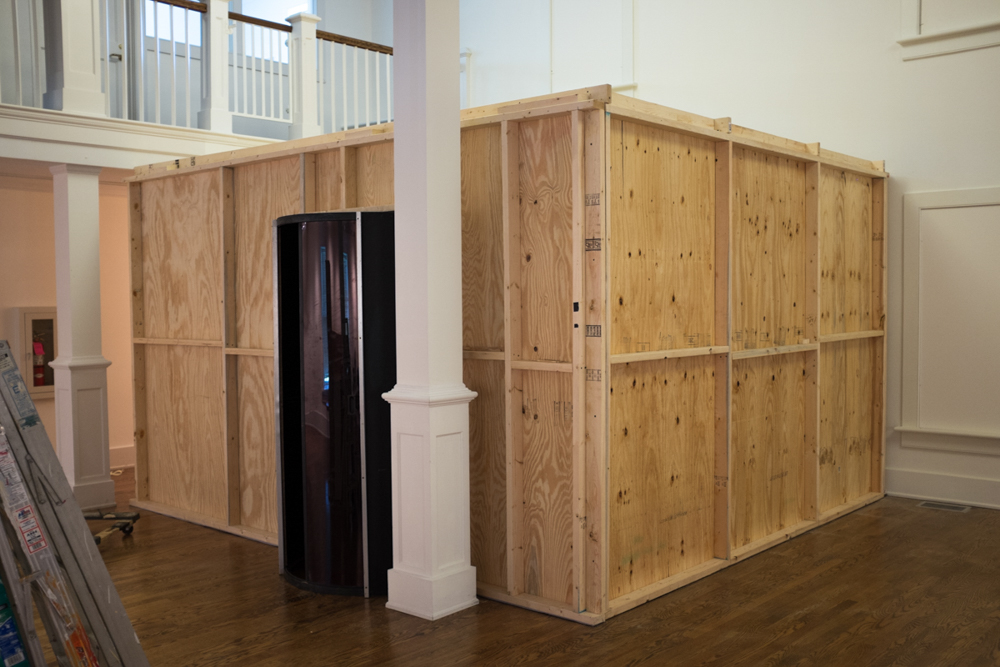
Would he be your favorite “skate artist” too? Someone from that industry, pro or not.
Probably Ed. Yeah. Hmm… Muska?
[Muska] made some sick furniture and it was on his Instagram a week or two ago.
Oh, yeah, designers/illustrators... Chris Johanson. Atiba [Jefferson], he always got me jazzed through photography. Flipping through Transworld as a teenager.
And he’s a real ass dude. A stand up guy for sure.
Yeah, I mean never met him, but he was one of the guys that made me first think about taking photos of skateboarding, skateboarding as an art form. Learning how to compose, etc.
He’s a Midwest kid, you know – Colorado. When I lived in California, whenever I met someone I really connected with, midway through the trip or the day or whatever the event or situation was I’d realize they were from KC or Indiana or Chicago or something. I always gravitated towards the Midwest folk even when I didn’t know it.
A lot of people try to escape the Midwest. I mean, I did too. There’s a lot of transplants in California.
In my opinion it’s pretty obvious how different skateboarders view and interpret the world around them, including how space is utilized. How do you think that’s shaped your own art practice? Do you think they’re related?
Yes, absolutely. I’ve always had a skateboard project in the back of my mind. That would sort of take off from the first experiments in the dark room. When I see those wheel patterns, all the space between them... that’s a drawing to me. A type of photography in a way. I see skateparks as a weird half playground, half sculpture. They definitely influence one another. Even with that Blue Line of Woods piece(s), when we were laying down cardboard [to test for light], it’s almost like you’re laying down sheets of plywood to make an approach. There’s “Mouse,” the Girl video, where they’re skating in the woods. That was rad. Reminds me of that a bit.
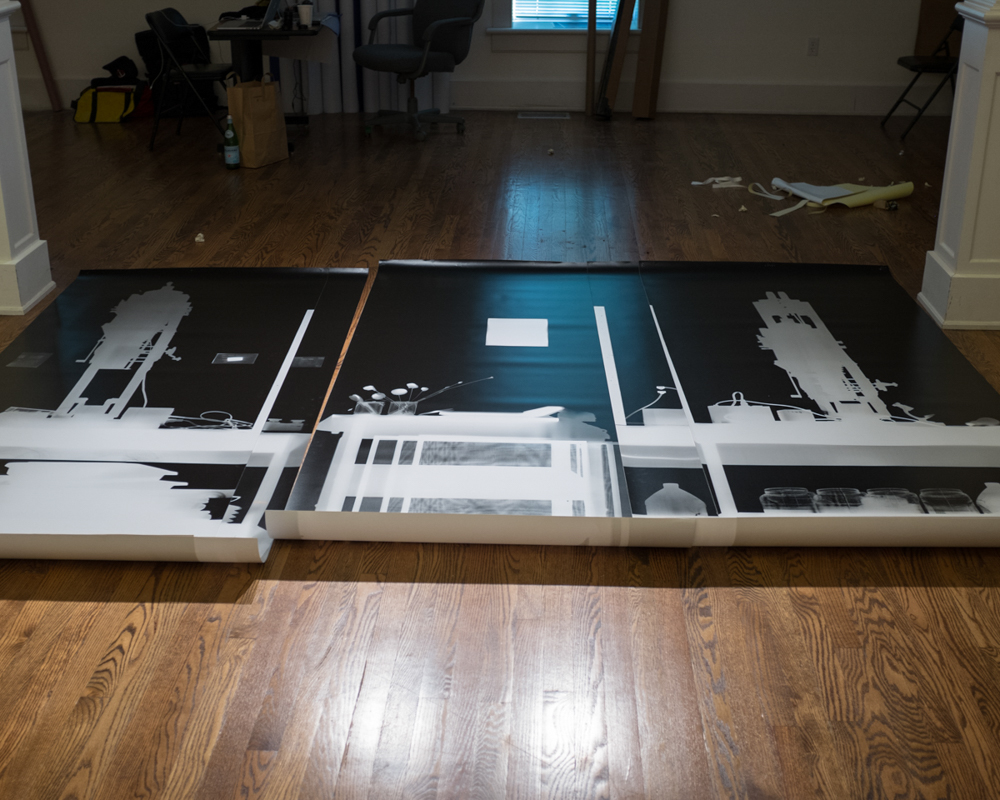
Okay, last one for comedy’s sake. How many times have you broken your arm?
Three. Just once skating, though. First time I was wrestling a couch cushion. Suplex on a concrete floor. Couch cushion won. The second one was stealing 2nd in little league. Some kid put a fake tag on me. I don’t know how old I was, maybe 12? The arm just snapped. The 2nd baseman was just terrified. He saw my weird dangling arm. And I just started swearing at him, every awful word I’d heard my dad say before... My mom is watching this from the stands. Then I got hit by the car. That was just a concussion. The day I got the cast off from breaking it the second time, they had to re-break my arm to fix it. I was like 15. Took the cast off, went skating the next day and broke it. Skating by myself on the ledge at the Junior High. Trying to do nose slides. Slipped.
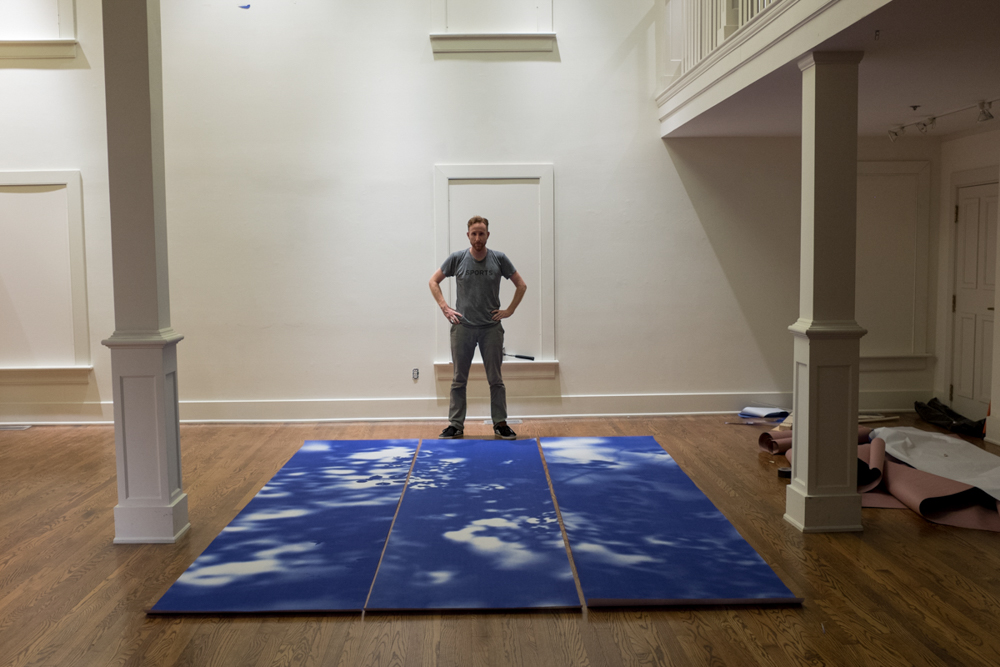
::
Keep up with Eric on his awesome website EricWilliamCarroll.com and his tumblr HumaneError.tumblr.com.
His show Disappearing Acts will have an artist talk and opening reception on October 23, 7-9pm at the Herndon Gallery at Ohio’s Antioch College. Click here for more information.

